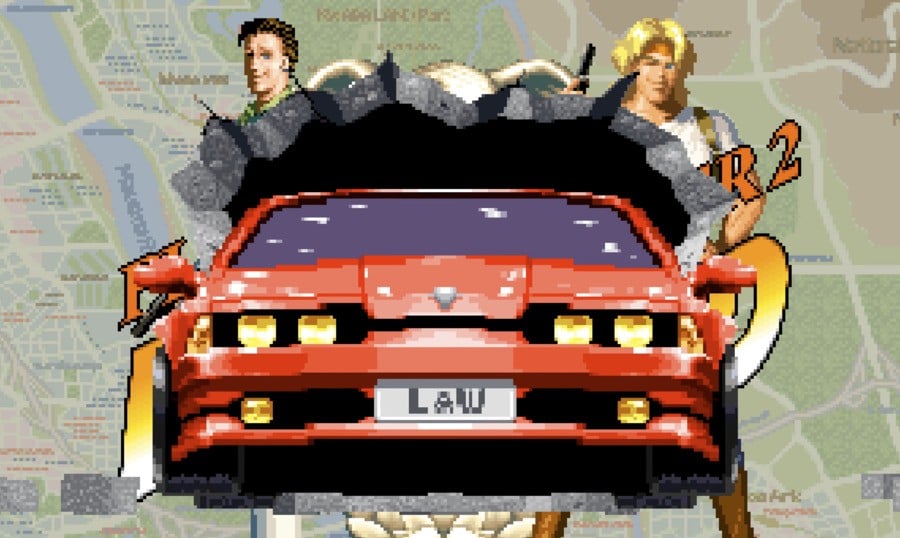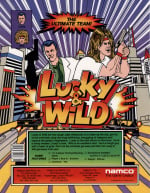
When developers decide to combine two different game styles, it can often get a bit messy, but there are times when such design alchemy produces incredible results – and Namco's Lucky & Wild is one such example.
Released in 1993, just as arcade gaming's 3D revolution began in earnest, Lucky & Wild is a unique coin-op that fuses the world of driving and shooting in a single, thrilling package. One player can assume the role of the suave cop Lucky, who controls the car and can shoot at the same time, while a second player can take control of the long-haired Wild (while the two characters appear to be loosely based on the protagonists of the 1989 buddy movie Tango & Cash, starring Sylvester Stallone and Kurt Russell, designer Yutaka Kounoe once told Retro Gamer magazine that he was unaware of the film when he was working on the game).
The aim is to chase down a series of criminals, blasting away other enemies and obstacles. Like Taito's Chase HQ, you must catch up with the stage's main boss before taking them down and moving on to the next bad guy. There are six stages in total, covering cities, deserts, highways and even docklands. The game betrays its '90s roots in-between levels, as our heroes take a trip to the 'Pink Cats Garage' where their vehicle is repaired by a selection of nubile young women wearing cat ears. Ahem.
Lucky & Wild's cabinet is certainly an intimidating beast; it features a steering wheel and two guns (which are actually joysticks, like Operation Wolf, rather than optical 'light guns'), giving players a dizzying number of control possibilities. While it's technically a two-player romp, three players can get involved – assuming they don't mind the squeeze in front of the arcade cab. With this setup, one person can focus on driving while the other two do the blasting.
While it launched in the same year as Ridge Racer, Lucky & Wild uses Namco's System 2 board and therefore relies on 2D sprites instead of 3D graphics. This gives it a cartoon-like feel that, you could argue, has aged much better than some of the polygon-based games of the same period. One of the highlights is the fact that the two leads are always visible in the rear-view mirror at the top of the screen; their wide-ranging expressions and reactions give Lucky & Wild an abundance of character.
Like so many other coin-op titles of its ilk, Lucky & Wild relies on largely repetitive action, but it keeps up your interest via some truly awe-inspiring set-pieces. During one section, a truck begins unloading its cargo of cars into your path, while later on you find yourself trapped in a burning warehouse, with Lucky's skill behind the wheel in high demand as falling girders threaten to crush your car. The need to navigate, shoot and take down incoming projectiles means every single second of Lucky & Wild's relatively meagre runtime (it can be finished in around 20 minutes by a skilful player) is packed full of action and excitement.
With its focus on cooperative play – and the need for a steering wheel and dual guns – it shouldn't come as a massive shock to learn that Lucky & Wild never left arcades; none of the then-available home systems could have handled the conversion anyway.
Outside of referencing the game's title in the Ridge Racer series, Namco appears to have turned its back on this, one of its most original and memorable arcade releases; it hasn't been included in any compilation of its past classics – which is a shame, because, at one point or another, the tech has existed to perfectly replicate the experience in your living room thanks to the availability of steering wheel controllers and light gun peripherals.
While Lucky & Wild is supported by the arcade emulator MAME, for the authentic experience, you really need to track down an original coin-op cabinet. It's one of the most incredible titles of the '90s and a game that sorely deserves to get a lot more attention than it currently does.

